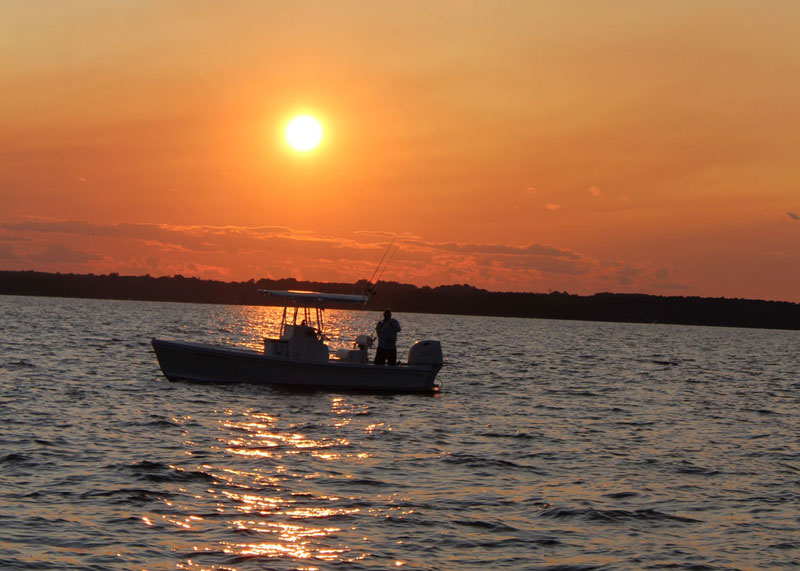It’s Saturday, July 19. The weather forecast is for low winds, calm seas, and cooler temps than we’ve been having all summer thanks to cloud cover, but no chance of rain. I’m taking a few friends fishing, guys who like many of us can’t fish on weekdays due to work. We all understand that on this beautiful summer Saturday the crowds will be thick, and every hotspot we visit is likely to be pressured.

There is virtually nobody out there. On a Saturday with ideal weather. In July.
We start at Calvert Cliffs, in the hope of finding a speckled trout or redfish. There’s one boat there. We run across to the remnants of James Island, also an area that often produces specks. It’s a ghost town. We hit the mouth of the Little Choptank, multiple hotspots in the Choptank, the Stone Rock, and Tilghman Reef. We see one boat fishing at two of the spots, and three near Sharp’s Island Light—the highest density “pack” of fishing boats we see all day. There’s no one fishing on the west side near the West River or in the South River, and we see one charter boat all day long. One.
As most of you will realize, this was during the two-week striped bass summer closure. There wasn’t any headline-worthy Middle Bay bite going off for other species, and people simply didn’t bother to go fishing. We don’t know the exact economic impact of this, but one thing is for sure: when anglers aren’t bothering to go fishing on a Saturday in July with ideal conditions, people in the fishing biz are taking a hit.
Charters, tackle shops, and marinas are the obvious losers. But there’s bound to be a significant trickle-down effect impacting everything from convenience stores to doughnut shops. And in this kind of climate people are far less apt to buy a fishing boat. Boat-owning anglers may even wonder why they spend so much money on an item they don’t get to enjoy as often as they used to, and (shudder!) consider selling their fishing machine. Some won’t get a fishing license when spring rolls around.
All of these economic impacts are important. We need charters so boatless people can be exposed to open waters and new anglers can be minted. We need tackle shops so we can talk to someone who actually has a clue before we make a purchase. We need marinas to keep and fuel our boats. And we need fishing to be popular if we want the DNR to have a decent budget, maintain our access points, and provide scientists to study the Bay.
Slumping boat sales should be the scariest factor of all from an economic standpoint, because they’re major-league purchases which generate a lot of jobs and a lot of taxes. For this reason, I’ve attempted to build some bridges between regulators and marine industry representatives in the recent past—though thus far to little effect. I hope that changes.
Wait a sec—don’t jump to any conclusions. I’m not saying the summer rockfish closure isn’t necessary, and I certainly think we need to do whatever we can to minimize striped bass mortality. But in truth, we should have other options in the Middle Bay during the summer months. If we weren’t plagued by near-nonstop algae blooms from May through August, might we have better angling for more diverse species? If we hadn’t destroyed a huge proportion of the Bay’s habitat, might larger numbers of more diverse species be swimming in our waters? If we hadn’t paved so much of the Western Shore with impervious surface that it altered tributary flows and changed them from steady levels to flash-flood-style runoff, might the species that spawn in our tribs enjoy substantially better success?
If you believe the answer to these questions might be yes, then you’ll probably agree that the root cause of this problem lies in our failure to address the basic water quality and habitat issues that we’ve been spinning our wheels on for decades. Meanwhile, I know one thing for sure: a near-empty Middle Bay on a nice Saturday in July is a red flag that something is very, very wrong.